The New Yard Pattern Book For Florida’s Sustainable Single Family Homes
Florida’s abundant freshwater resources are shown to be heavily impacted by traditional landscaping practices. Groundwater withdraws have tripled over the last 50 years and pose a significant threat to the amount of water available to residents, industries, and wildlife that depend on Florida’s fragile groundwater ecosystems. In-ground irrigation systems, which have become the standard in master planned communities and residential yards, are a major factor in the depletion of our finite water source. The vast quantities of fertilizer required to maintain typical turf monocultures in residential yards not only finds its way into our water, but also severely impacts the health of our soils. Chemical fertilizers cause nutrient imbalances in the soil, while also promoting poor water retention, leading to an even higher usage of water when maintaining the traditional yard. Master planned communities that utilize turf monocultures and promote non-native plantings require the use of chemical pesticides that also contribute to the pollution of our water supply. The conventional landscaping patterns established in most master planned communities do little to mitigate or compensate for the larger problem of habitat loss of Florida’s natural ecosystems and further contribute the nutrient pollution, including phosphorus and nitrogen, that negatively affects Florida’s watersheds and surface waters.
In response to these issues, THE OUTSIDE COLLABORATIVE established this handbook to provide landscape guidelines for master planned communities to do just that! These guidelines are based on principles of sustainable design that are intended to maximize community amenities and homeowner experience, while also making them more functional for the landscape and its ecology.
The New Yard Pattern Book is aimed at uniting developers, builders, landscape architects, nursery men, contractors and the public under the overarching goal of conserving natural resources and creating and preserving natural habitats by utilizing sustainable design practices.
The Pattern Book focuses on 4 key factors, referred to as the “Big Four”:
• Low Water Use - by choosing locally adapted site appropriate plant material that minimizes or eliminates the need for irrigation post establishment.
• Ecosystem Benefits - facilitated by planting a variety of native species in varied heights, features, and form; resulting in a resilient and beautiful yard that promotes and maximizes ecological diversity and ecosystem services, while conserving Florida’s natural heritage and promoting human wellness.
• Healthy Soils - encouraging the regular use of compost and organic material, such as leaf litter, thereby minimizing or eliminating the need for mineralized fertilizer.
• Holistic Pest Management - choosing native plants that build habitat and create balanced ecosystems in which living organisms suppress pest populations and minimize or eliminate chemical pesticide use.
THE OUTSIDE COLLABORATIVE continues to test and learn using academically monitored and measured experimental designs monitoring biodiversity, water use, and plant health, as well as real-world applications. The lessons learned are assigned to the Pattern Book, which is shared widely and freely to inspire and inform.
Client
Pro Bono effort with THE OUTSIDE COLLABORATIVE
Project Awards
2024 ASLA Florida Award of Merit
Design Team
Dix.Hite + Partners
University of Florida (Basil Iannone III, PhD; Pierce Jones, PhD; Brooke Moffis; Gail Hansen de Chapman, PhD; Mark Hostetler, PhD; M. Jennison Kipp)
University of Central Florida (Patrick Bohlen, PhD)
The Nature Conservancy (Lesley Bertolotti; Kierstyn Cox)
Cherrylake (Timothee Sallin; David Ressler; Jimmy Rogers; James Dyer)
St. Johns Riverkeeper (Gabbie Milch)
My Dragonfly Gardens (Victor Ortega)
Mary Paulic









